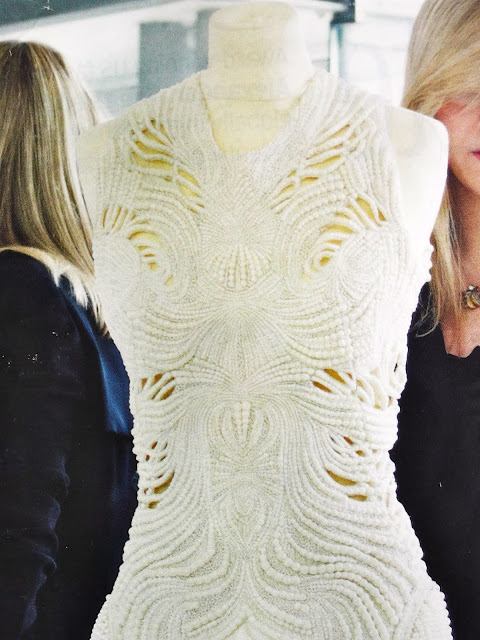I was not really expecting to enjoy it, thinking it was likely to be a marketing exercise.
It turned out to be a celebration of the creative arts that had gone into the making of all the Harry Potter films, and a demonstration of the creative process in some detail. I have included some photos in this learning log because they reflect a lot of what I have learned on this course about how it's done, and I want to keep many of them as inspiration for sketchbook work in the future.
This book, one of many created especially for the film, was a text book of magical plants. The whole shape of the book has been altered to give the appearance of being made of moving water plants, and there are 'bubbles' somehow made of light rising from the word 'Magical'. The rest of the book has been treated to make it look as if it has spent some time under water.
I think this is a beautiful and resonant bit of thinking outside the box. I love it. And it makes me want to be as free as I possibly can in my creative thinking.
This architect-style model of the imaginary village of Hogsmeade (I think) has the meticulousness and teeming detail that particularly awes me when it's done well.
Making models or samples allows problems to overcome and new ideas to be incorporated as they make you think in a different way about the same thing, and also to find out how the materials used affect the outcome.
Prior to starting this course I had not used this part of the creative process at all, and often ended up stopping halfway through making something because of this.
I do like the irregular repetitiveness of this model, and the extra-tall chimneys sticking up. This is getting to be a bit of a theme for me - hairiness in one form or another.


These two pictures are examples of workmanship and design that struck me when I was watching the film, and are even more impressive in real life.
The tapestry family tree (with some of the faces burned out) looks as authentically tapestry-woven as you could hope for, and has a lovely rhythm to the shapes of the branches. The colours are subdued as if faded through the years, and the detail keeps you looking without distracting from the overall appearance of it.
The metalwork pattern on the right is an intricate magic lock for a vault door. It's a masterwork of intricacy and repetition. It reminds me that repetitive patterns have the capacity to be beautiful and makes me want to try out a few in my sketchbook.
The next few photos are of things which demonstrate different sorts of fabric treatment or manipulation as explored in this course.
This phoenix's bright feathers are made of satin cut into shapes and layered on each other.
Fabric printing, painting and treatments:
The rather unfocussed photo below shows a combination of printing and painting (I think - it looks singed in fact) to give the look of a well used skirt.
 Fabric Manipulation:
Fabric Manipulation:The sleeves of the same dress are decorated with slit rolls over scrunched pieces of the same colour, and the front of the bodice with fabric scrunched into 3D patterns, and stuffed twists.
 Surface stitching:
Surface stitching:This bag for a ball is embroidered relatively crudely, as if the student might have made it herself.
The sleeve of this dress has a lovely lattice pattern made by manipulating the fabric itself that looks like a feminine version of armour by virtue of the silvery colour and slight sheen, and the robustness of the lattice. This suits the combative female character it was made for.
Colour:
I have included this photo of the cover of Ron Weasley's bed, because it is an example where the lack of harmony in the colours gives it meaning.
It lets you know that it was made by someone who didn't have enough wool to make the colours harmonious, but loved him enough to spend the time and effort to keep him warm when he was away from home.
Finally, here are two other images that I find interesting and want to explore a bit in my sketchbook.
 |
| I find myself looking at the contrast between the irregularly regular horizontal fluffy stripes, and the rounded stiff metal verticals in this photo of a post owl. |












































.jpg)






